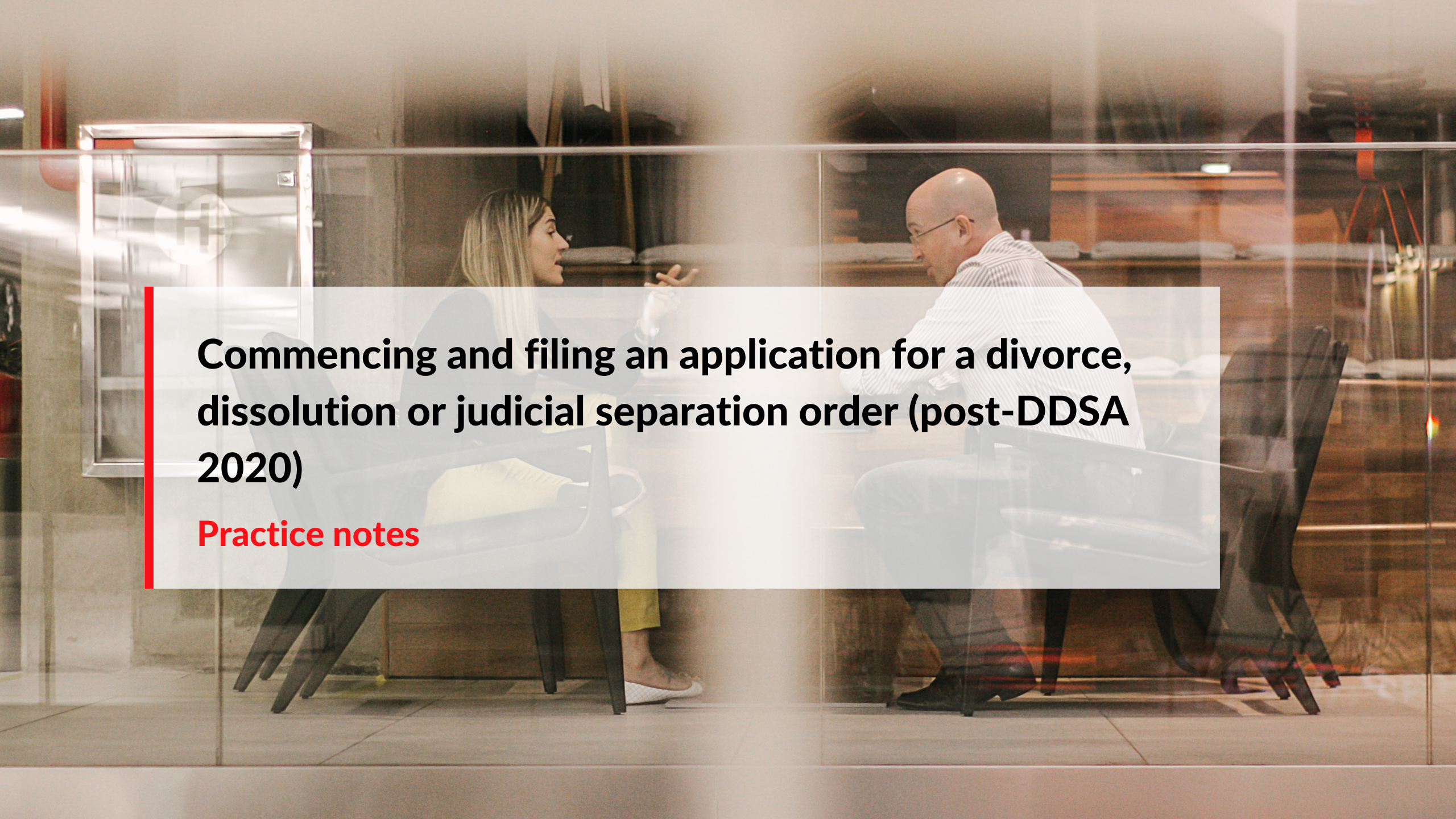Lessons learnt from Ancient Rome’s 'No Fault Divorce'

'No Fault Divorce' was not invented in the 20th century - some argue it was practiced by the ancient Romans
The Romans were more liberal in their divorce practices than contemporary societies. Back then, you didn't "get a divorce" - you simply divorced.
As England and Wales introduce 'No Fault Divorce', what can we learn from how it played out in ancient society? And how can we ensure painful patterns don't emerge yet again?
'No Fault Divorce' UK 2022: the biggest shake up in divorce law for half a century
Pointing the finger seems part and parcel with modern divorce proceedings – or at least it did. The newly passed Divorce, Dissolution and Separation Act 2020 (DDSA 2020) has removed finger-pointing from the equation entirely by making divorce blame free (well, at least in theory).
This marks the biggest change to divorce law in England and Wales for half a century and is a major milestone in removing the need to list a fault as grounds for divorce.
This ground-breaking approach to divorce, which was first introduced at the beginning of the 20th century and adopted by California in the 60s, Australia in the 70s and Canada in the 80s, is becoming more and more commonplace across the globe - but is it all that ground-breaking?
Read up on void and voidable marriage law
History buffs might recall reading about the freedom at which the ancient Roman elite went about obtaining a divorce.
We explore how ancient Rome - the birthplace of modern law - thought divorce so commonplace that it was unnecessary to legally document.
"To divorce, one or both parties to a Roman marriage simply had to consider themselves no longer married. It was deemed advisable to notify the other party, but not legally required that one do so. No public authority was involved."
Stanford University classics Professor and author of Roman Marriage, Susan Treggiari

A few famous examples
Julius Caesar
Perhaps the most well-known Roman of all time, Julius Caesar, had three wives over his life-time (some argue four), which was famously cut short when he was assassinated in 44 BC.
Wife one: Cornelia (m. 84 BC; d. 69 BC)
Wife two: Pompeia (m. 67 BC; d. 61 BC)
Wife three: Calpurnia (m. 59 BC; to his death in 44 BC)
Wife number two, Pompeia, he divorced after she attended a womens only religious ritual in which his enemy at the time - Publius Clodius Pulcher - snuck in disguised as a woman. "My wife ought," he is quoted as saying, "not even to be under suspicion."
Mark Antony
Caesar's right-hand general, Mark Antony, was said to be a serial womaniser. He was divorced four to five times (also disputed) before his death alongside his lover turned wife Cleopatra.
1) Fadia (?)
2) Antonia Hybrida (?–d. 47 BC)
3) Fulvia (m. 46 BC; d. 40 BC)
4) Octavia Minor (m. 40 BC; d. 32 BC)
5) Cleopatra (m. 32 BC; to his death in 30 BC)
Emperor Augustus
Finally, the famous emperor Augustus who maintained a highly public marriage for over half a century and imposed strict marital laws to stop a supposed spree of adulteries, was himself a double divorcee.
1) Claudia (m. 42 BC; d. 40 BC)
2) Scribonia (m 40 BC; d. 38 BC)
3) Livia (m. 37 BC; to his death 14 AD)



How does 'No Fault Divorce' work in the UK?
The Divorce, Dissolution and Separation Act 2020 (DDSA 2020) has put an end to the blame game seen in far too many divorce proceedings.

Under the Matrimonial Causes Act 1973 (MCA 1973, s 1(2)), the sole grounds for divorce or dissolution is that the marriage has broken down irretrievably by proving one of five facts. Three facts were based on fault, (adultery, unreasonable behaviour and desertion), and two facts were based on a period of separation (two years’ separation with consent or five years’ separation without consent).
But claiming fault wasn't always done because this was the real cause of the breakdown, or because they wanted to blame their spouse/civil partner - it was because the alternative was to wait at least two years for a divorce.
The Divorce, Dissolution and Separation Act 2020 (DDSA 2020) will mean couples going through a divorce or dissolution will no longer have to make allegations about each other’s conduct or wait until they have been separated for at least two years for a divorce or dissolution by consent.
"This historic change will mean the end of the blame game for divorcing couples, removing the outdated and unnecessary need for them to find fault with their ex on the divorce petition."
Juliet Harvey, National Chair of family law network Resolution
"The new legislation represents the biggest shake-up in divorce law for 50 years. It is an important step in moving away from animosity and blame being the norm, to a place where the welfare of those involved – particularly children – is at the forefront of the process."
Aidan Jones, Chief Executive at counselling charity Relate
DDSA 2020 amendments
- No fault needed for divorce proceedings
- There's no longer an option to dispute a divorce
- The language is noticeably clearer
- Couples can file for divorce together, rather than there having to be an applicant and a respondent
- A 20 week timeframe has been introduced between filing for divorce and the first stage of the divorce process.

Divorce: Why are we forced to point the finger?
The need to prove adultery during divorce proceedings dates back to the fourth century AD

We can trace the origins of the need to prove fault (especially adultery) in divorce proceedings back to Christian philosopher Saint Augustine’s writings in the late fourth century AD, according to ancient history expert and author of Marriage, Sex and Death, Dr. Emma Southon.
Augustine suggests the impossibility of remarriage (for either men and women) after divorce because of the creation of ‘one flesh’ from two bodies at the point of marriage - and this theory made its way into legal texts.
Are you up to date with the latest on gender recognition in family law cases?
“The separation of this bond was considered to be theologically impossible, a concept which leads to an extremely hard line on the possibility of separation or divorce in Christian thought, a line which corresponds neatly with the broad pattern visible in the secular legal texts.”
Dr. Emma Southon, author of Marriage, Sex & Death
How 'No Fault Divorce' worked in Ancient Rome
What did Rome's 'No Fault Divorce' look like in practice? We explore the ins and outs

"Rome is quite a moralistic society," says LJ Trafford, author of Sex and Society in Ancient Rome, on The Ancients podcast. "It's quite conservative. And there's a lot of handering that goes on about public morals, and improving them, to the point where the state gets involved."
But what Rome has that a lot of societies don't have is divorce, says Trafford.
"You can get divorced in Ancient Rome. And it's relatively easy, and men and women can initiate it. So you do get quite a bit of remarriage."
Early in Rome's history, a man could only divorce his wife on the basis of major faults (adultery, for instance, or wine-drinking) - but by the first century BC this had evolved so that both men and women could divorce their spouses without justification.
Stanford University classics Proffesor Susan Treggiari, says: "Classical Roman law, from 100 BC on, required the consent of both bride and groom to an engagement and marriage. As a practical matter, since divorce was easily available, forcing a couple to marry made no sense."
For the aristocratic elite, marriages were made for political purposes rather than romantic reasons.
"If you look at the late republic, people seem to be getting married, and then that political alliance isn't working and then they marry somebody else for a new political alliance," says Trafford.
For instance, to ease growing tensions between Julius Caesar and Pompey Magnus - two political heavy weights - Caesar's daughter Julia was wed to Pompey to forge an alliance. And again, when Octavian (Emperor Augustus) and Mark Antony were competing for power, Octavian wed Antony to his sister Octavia Minor. This approach wasn't overly successful, with wars breaking out in both instances, but it could be argued that these marriages delayed war by several years (success?).
When a Roman woman married, she entered into her husband's legal control - and a dowry was given to ensure her well-being. By modern standards, this is of course abhorrent, but it was the little protection women were given. However, in later years women could marry without going under the husband's legal control - they belonged to their father's household, says Treggiari.
Fact 1:
To divorce, one or both parties to a Roman marriage simply had to consider themselves no longer married.
Fact 2:
Official registration of divorce was not required until 449 AD.
Fact 3:
Even Emperors married divorced women - sometimes women with multiple divorces.
Fact 4:
Only one spouse's will was required for any divorce, even if the divorced party was not informed.
Fact 5:
Marriages were often made to reinforce political alliances.
The lessons we can learn from the Romans
What are the risks that come alongside 'No Fault Divorce'? And what are the benefits?

With its complex legal system, elaborate architecture and expansive trade, it's easy to glamourise ancient Rome.
But behind the backdrop of marble arches and bath houses we see on screen is a deep-seated culture of violence. Just look at its very origin story of Romulus and Remus and the founding of Rome - it's a complete bloodbath! This too can be seen inside domestic life, as this article published on The Conversation outlines.
And while the Romans maintained a liberal approach to divorce, women were treated as political pawns to be given and taken back as their fathers or male heads of the household pleased.
Declarations as to marital and civil partnership status
Instead of putting ancient Rome on a pedestal or disregarding it completely, we can draw from some of its most admirable attributes, such as:
Shame needn't be attached to divorce. The Romans didn't associate shame with divorce in the same way our society does.
Providing fault when divorcing is unnecessary. The Roman legal system operated effectively without having to point blame during the divorce process. Neither party had to justify why they wanted a divorce.
Equality needs to exist during the divorce process. While Roman women were not treated as equals by any means, the marriage contract between the husband and father was on an equal playing field. In a modern context, both parties entering into and exiting a marriage or civil partnership deserve to be treated as equals.
The downsides of ancient Rome's approach to marriage and divorce are endless - but the most relevant red flag worth bearing in mind is the treatment of children. Children often stayed with the mothers after a divorce, but male heirs in elite circles were commonly adopted or traded in the same political manner as women.
Hasty dissolutions of marriages can mean hasty decisions are made regarding children. England and Wales' 20 week wait before a divorce goes through to the first stage will act as a buffer to ensure arrangements are well thought out, but there is still a strong risk that these children and their needs could fall through the cracks.

"This is far from the end of the journey, though. As a society we must encourage healthy relationships, reduce parental conflict (whether parents are together or not) and in turn improve children’s wellbeing and life chances. Relationship support services are vital to this."
Aidan Jones, Chief Executive at counselling charity Relate





